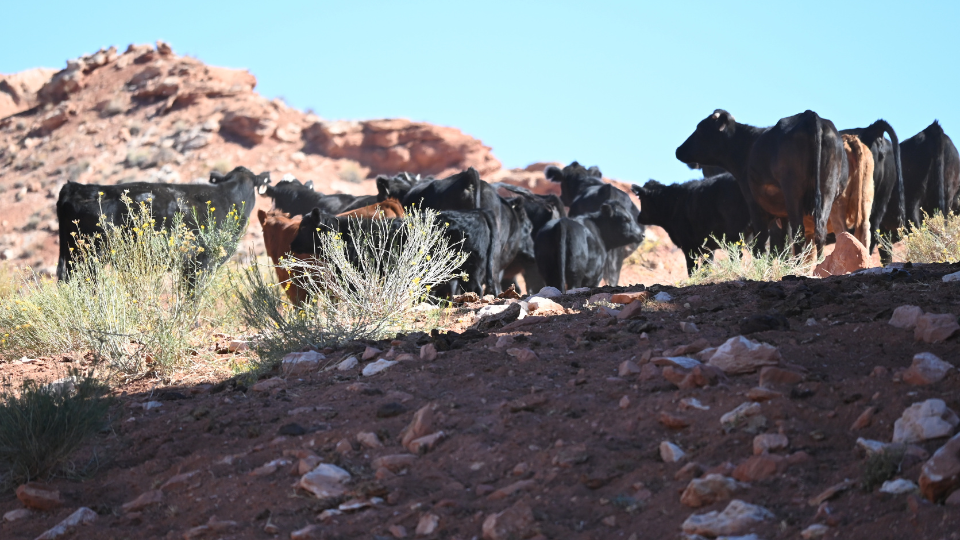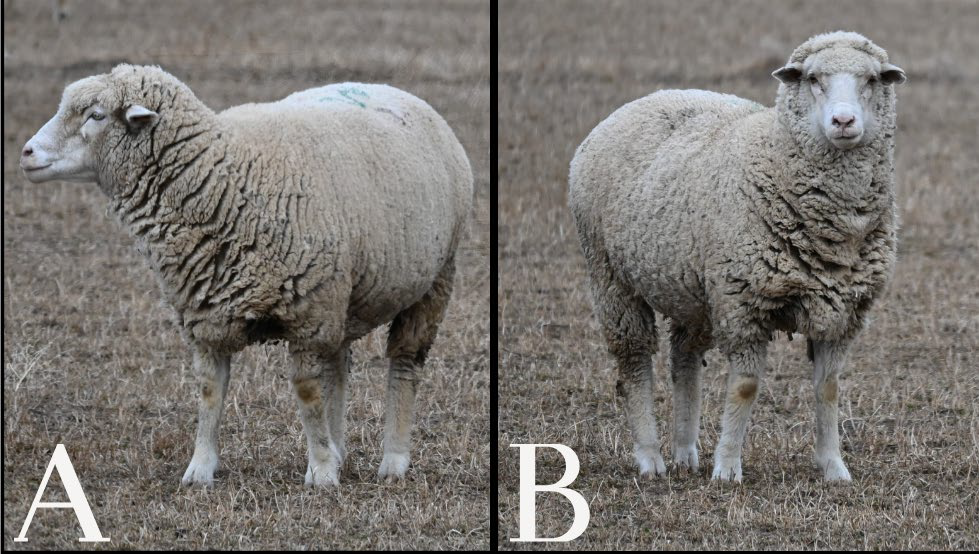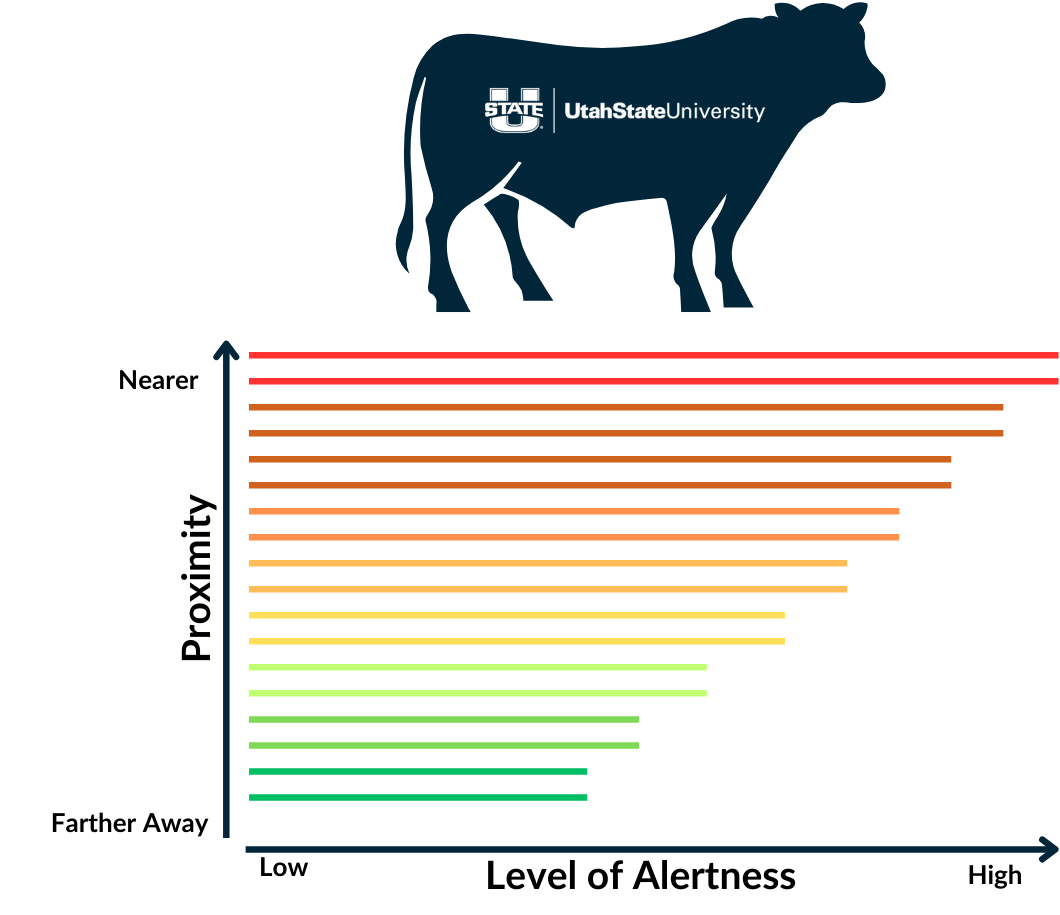An Introspective Understanding of Livestock Movement

Approaching livestock of any size can be daunting for those new to the process. Newborn calves weigh as little as 50 pounds, while a full-grown animal can often exceed 1,600 pounds. It is critical to understand that although the size difference between a human and a cow may be extreme, humans still have the full ability to move most cattle in any direction (as fast or slow) as desired. For this fact sheet, the term livestock refers to sheep and cattle, as they represent the livestock animals that we move most often.
Five key principles simplify understanding livestock movement: stewardship, personal state, energy, pressure zones, and release. When applied in unison with a willing mindset, each principle leads to a deeper understanding of livestock movement and growth for the handler.
Stewardship
Stewardship can be defined as “the careful and responsible management of something entrusted to one’s care” (Merriam-Webster, n.d.). Understanding the position of livestock owner or worker allows the handler to take on a sense of responsibility. This sense of responsibility, when recognized, seeds the understanding of what stewardship is. A defining role of human beings is the inherent stewardship over the world’s resources.
Personal State
Personal state refers to the condition that you are in mentally, physically, and emotionally at any given time. Attempting to accomplish a task with livestock when your personal state is not at its best can often lead to long days, frustration, and even dangerous situations. It is important to remember that when you are handling livestock, you are interacting with that animal/group. If your personal state is not calm and willing, you may need to take a step back from the task, regroup, and re-engage when you are ready. Personal state is akin to mindfulness. Mindfulness can include recognizing where your thoughts are, what you are feeling emotionally and physically, and whether you are present in the moment. Conversely, are you thinking about something that doesn’t relate to what you are doing? And what is your body literally feeling (physical touch/sensation) right now? (Can et al., 2020).
Energy
Energy is very much related to the discussion of personal state. Your presence in a task brings tangible energy to the animals. As you focus on your personal state, the energy you bring to a handling situation is more perceivable. Energy can be felt quite easily when you pause to pay attention. Apply this knowledge as you look at Figure 1. Do you notice that your eyes are drawn to a certain side of the image? What do feel as you look between image A and image B? Image B may convey neither positive nor negative energy; however, energy and attention are present. Energy is an important tool in livestock handling and can be thoughtfully prepared through understanding the preceding topics of stewardship and personal state.
Figure 1. Notice the Difference in Energy From Image (A) and Image (B)

Pressure Zones
Pressure zones are also known as “fight or flight zones.” A productive mindset considers pressure zones as “working zones.” These are the areas around the animal where they are more aware of what is happening and can begin to feel uncomfortable. Generally, as you decrease the distance between you and the animal, you increase your presence in their pressure zone (Figure 2). It is important to understand that individual animals may feel your pressure at varying distances. Some livestock are comfortable with your presence, and you may need to get quite close for them to move away, while others may be running by the time you enter the paddock. The lesson is this: Spending time walking around and working with the animals safely in a quiet manner will allow you to learn their pressure zones. As your confidence to feel those zones grows, you permit the animals to learn and react in a calm environment.
Figure 2. Proximity and Perception Representation for Livestock

Note. The vertical axis represents your proximity to the animal, and the horizontal axis represents the animal’s corresponding alertness. The gradient of green to red represents the animal’s comfort in relation to your proximity, with green representing comfortable and red representing very uncomfortable.
Release
As you understand the preceding subjects of stewardship, personal state, energy, and pressure zones, you can implement them in your work. The last subject acts as the reward for both the handler and the animal. Release is the method by which you remove your personal state, energy, and presence from the animal’s pressure zone. It is important to know that many livestock can remember experiences and discriminate good ones from bad ones (Nawroth et al., 2019). When you have established the correct directional movement of the animals you’re working with, you do not need to continue to apply as much pressure. Stay aware of the movement; if the animals move off course, reengage them calmly. By slowly releasing your pressure from the herd as they continue in the correct direction, you reward them. In turn, the animals register a positive working experience.
References
- Can, Y. S., Iles-Smith, H., Chalabianloo, N., Ekiz, D., Fernández-Álvarez, J., Repetto, C., Riva, G., & Ersoy, C. (2020). How to relax in stressful situations: A smart stress reduction system. Healthcare (Basel, Switzerland), 8(2), 100. https://doi.org/10.3390/healthcare8020100
- Merriam-Webster. (n.d.). Stewardship. In Merriam-Webster.com dictionary. Retrieved May 7, 2024, from https://www.merriam-webster.com/dictionary/stewardship
- Nawroth, C., Langbein, J., Coulon, M., Gabor, V., Oesterwind, S., Benz-Schwarzburg, J., & von Borell, E. (2019). Farm animal cognition-linking behavior, welfare and ethics. Frontiers in Veterinary Science, 6, 24. https://doi.org/10.3389/fvets.2019.00024
June 2024
Utah State University Extension
Peer-reviewed fact sheet
All images were provided by the author.
Authors
Ethan Gilliam, Assistant Professor, Utah State University Extension, Agriculture and Natural Resources
Related Research


